Transforming Challenges into Opportunities for Qatar’s Food Industry: Self-Sufficiency, Sustainability, and Global Food Trade Diversification
Abstract
1. Introduction
2. Materials and Methods
2.1. General Formulation
2.2. Calculating the Carbon Footprint
2.3. MRIO Analysis
3. Results and Discussion
- Create a database management system and visualization method to analyze imported food in Qatar between 2013 and 2018.
- Identify the economic, geographical, and social impacts of the blockade on Qatar’s food supply chain.
- Utilize data analytics and visualization techniques to measure and manage the carbon footprint of freight transport operations for dairy products across various transport scenarios.
3.1. Embargo Effect on Qatar Import Structure
3.2. MRIO Results for Milk and Dairy Production
4. Conclusions
Author Contributions
Funding
Institutional Review Board Statement
Informed Consent Statement
Data Availability Statement
Conflicts of Interest
References
- Pinstrup-Andersen, P. Food security: Definition and measurement. Food Secur. 2009, 1, 5–7. [Google Scholar] [CrossRef]
- Al-Saidi, M.; Saliba, S. Water, energy and food supply security in the Gulf Cooperation Council (GCC) countries—A risk perspective. Water 2019, 11, 455. [Google Scholar] [CrossRef]
- Hertel, T.; Elouafi, I.; Tanticharoen, M.; Ewert, F. Diversification for enhanced food systems resilience. Nat. Food 2021, 2, 832–834. [Google Scholar] [CrossRef]
- Wang, Y.; Zhu, Y.; Zhang, S.; Wang, Y. What could promote farmers to replace chemical fertilizers with organic fertilizers? J. Clean. Prod. 2018, 199, 882–890. [Google Scholar] [CrossRef]
- Liu, H.; Fan, X. Value-added-based accounting of CO2 emissions: A multi-regional input-output approach. Sustainibility 2017, 9, 2220. [Google Scholar] [CrossRef]
- Egilmez, G.; Kucukvar, M.; Tatari, O.; Bhutta, M.K.S. Supply chain sustainability assessment of the U.S. food manufacturing sectors: A life cycle-based frontier approach. Resour. Conserv. Recycl. 2014, 82, 8–20. [Google Scholar] [CrossRef]
- Bulak, M.E.; Kucukvar, M. How ecoefficient is European food consumption? A frontier-based multiregional input–output analysis. Sustain. Dev. 2021, 30, 817–832. [Google Scholar] [CrossRef]
- Ahmed, J.U.; Begum, F.; Ahmed, A.; Talukder, N. A blessing inside a calamity: Baladna food industries in Qatar. Int. J. Manag. Enterp. Dev. 2020, 19, 203–216. [Google Scholar] [CrossRef]
- Dixon, J.; Richards, C. On food security and alternative food networks: Understanding and performing food security in the context of urban bias. Agric. Human Values 2016, 33, 191–202. [Google Scholar] [CrossRef]
- Yu, Y.; Feng, K.; Hubacek, K.; Sun, L. Global Implications of China’s Future Food Consumption. J. Ind. Ecol. 2016, 20, 593–602. [Google Scholar] [CrossRef]
- Amery, H.A. Food Security in Qatar: Threats and Opportunities. Gulf Insights Ser. 2019, 7, 1–6. [Google Scholar]
- Kucukvar, M.; Samadi, H. Linking national food production to global supply chain impacts for the energy-climate challenge: The cases of the EU-27 and Turkey. J. Clean. Prod. 2015, 108, 395–408. [Google Scholar] [CrossRef]
- Kajenthira Grindle, A.; Siddiqi, A.; Anadon, L.D. Food security amidst water scarcity: Insights on sustainable food production from Saudi Arabia. Sustain. Prod. Consum. 2015, 2, 67–78. [Google Scholar] [CrossRef]
- Manikas, I.; Sundarakani, B.; Anastasiadis, F.; Ali, B. A Framework for Food Security via Resilient Agri-Food Supply Chains: The Case of UAE. Sustainibility 2022, 14, 6375. [Google Scholar] [CrossRef]
- Kucukvar, M.; Onat, N.C.; Abdella, G.M.; Tatari, O. Assessing regional and global environmental footprints and value added of the largest food producers in the world. Resour. Conserv. Recycl. 2019, 144, 187–197. [Google Scholar] [CrossRef]
- Wald, N.; Hill, D.P. ‘Rescaling’ alternative food systems: From food security to food sovereignty. Agric. Human Values 2016, 33, 203–213. [Google Scholar] [CrossRef]
- McKinnon, A.C.; Piecyk, M.I. Measurement of CO2 emissions from road freight transport: A review of UK experience. Energy Policy 2009, 37, 3733–3742. [Google Scholar] [CrossRef]
- Nunes, R.A.O.; Alvim-Ferraz, M.C.M.; Martins, F.G.; Sousa, S.I.V. The activity-based methodology to assess ship emissions—A review. Environ. Pollut. 2017, 231, 87–103. [Google Scholar] [CrossRef] [PubMed]
- Bukhari, I. Turkish Diary & Poultry Products Hit Qatar Retail Shelves to Allay Supply Woes after Blockade. The Peninsula. 9 June 2017. Available online: https://thepeninsulaqatar.com/article/09/06/2017/Turkish-diary-poultry-products-hit-Qatar-retail-shelves-to-allay-supply-woes-after-blockade (accessed on 19 March 2023).
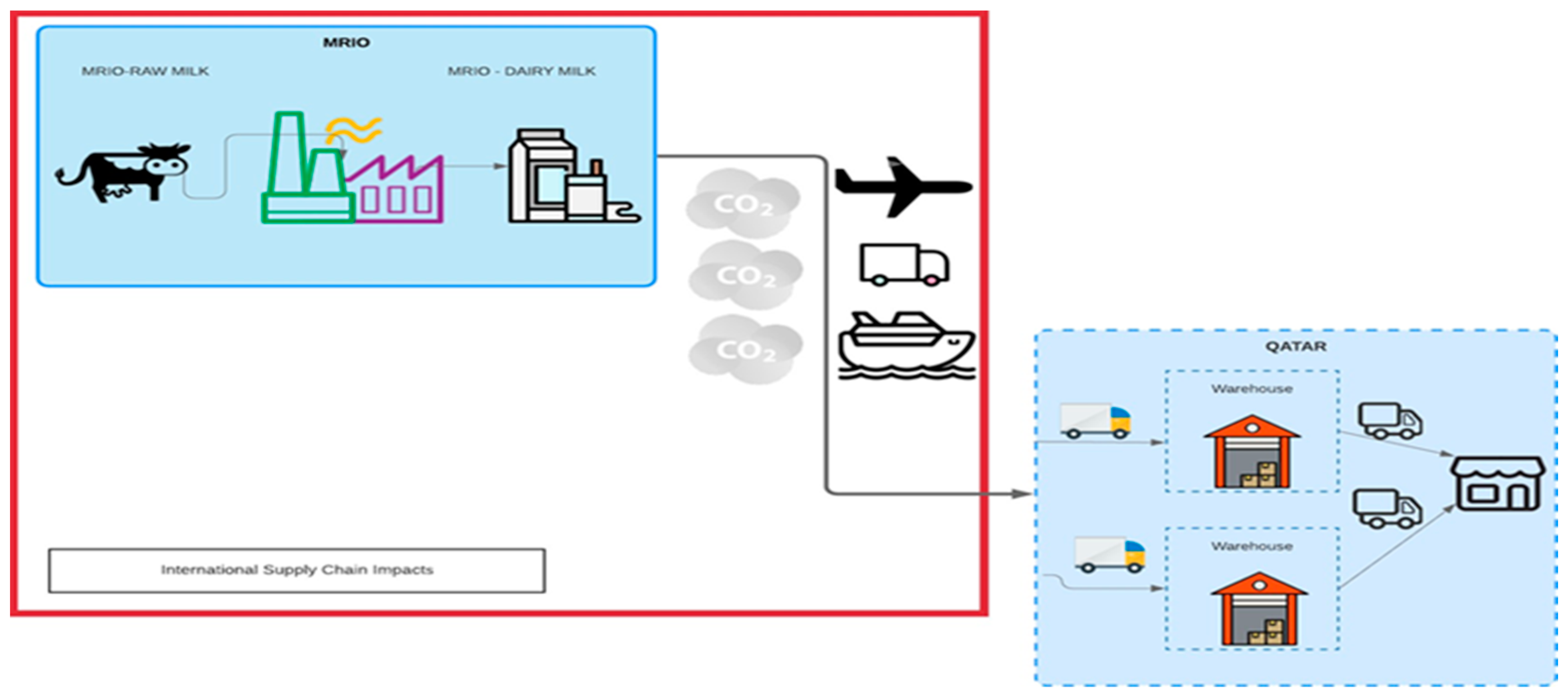

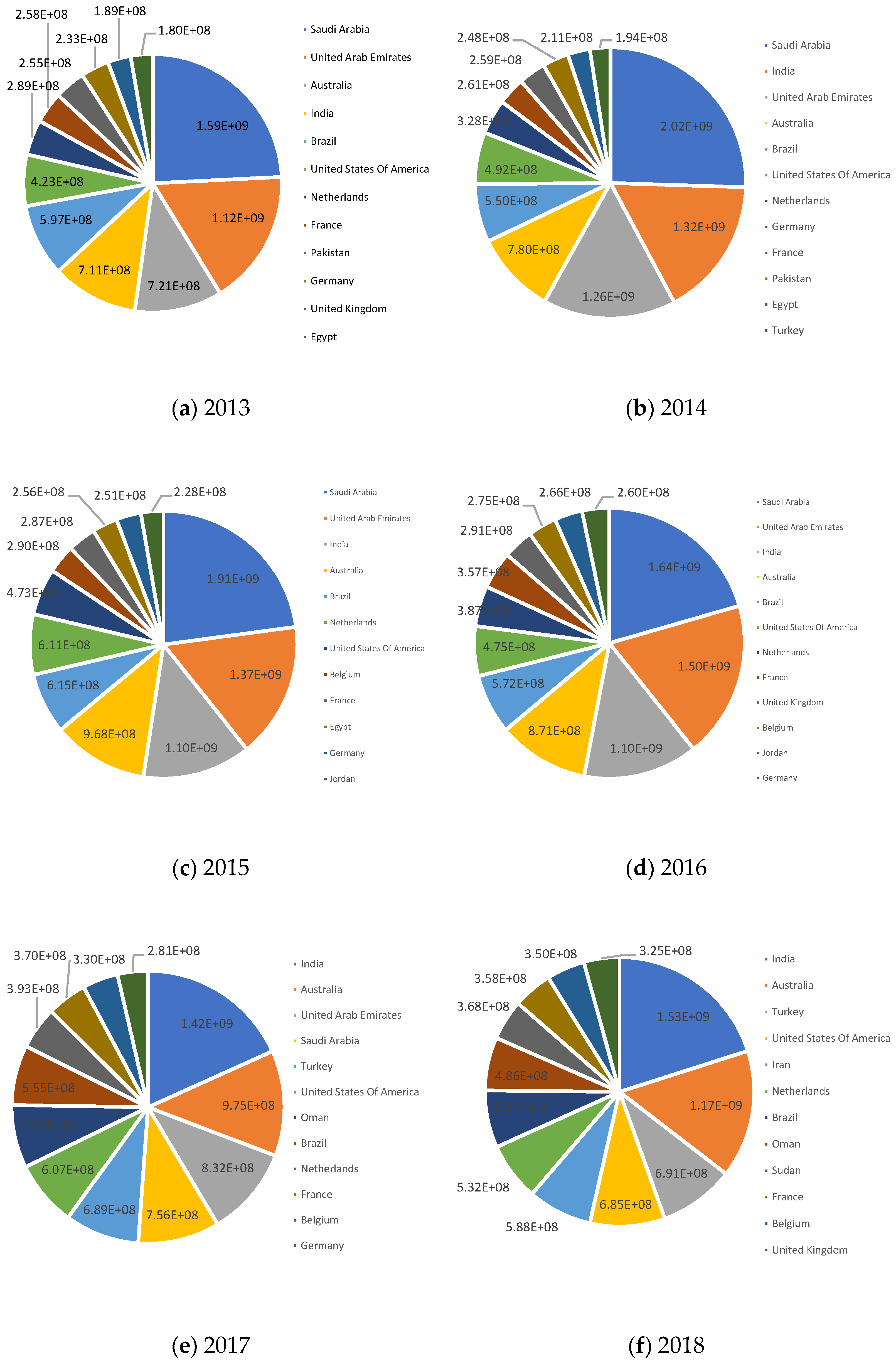
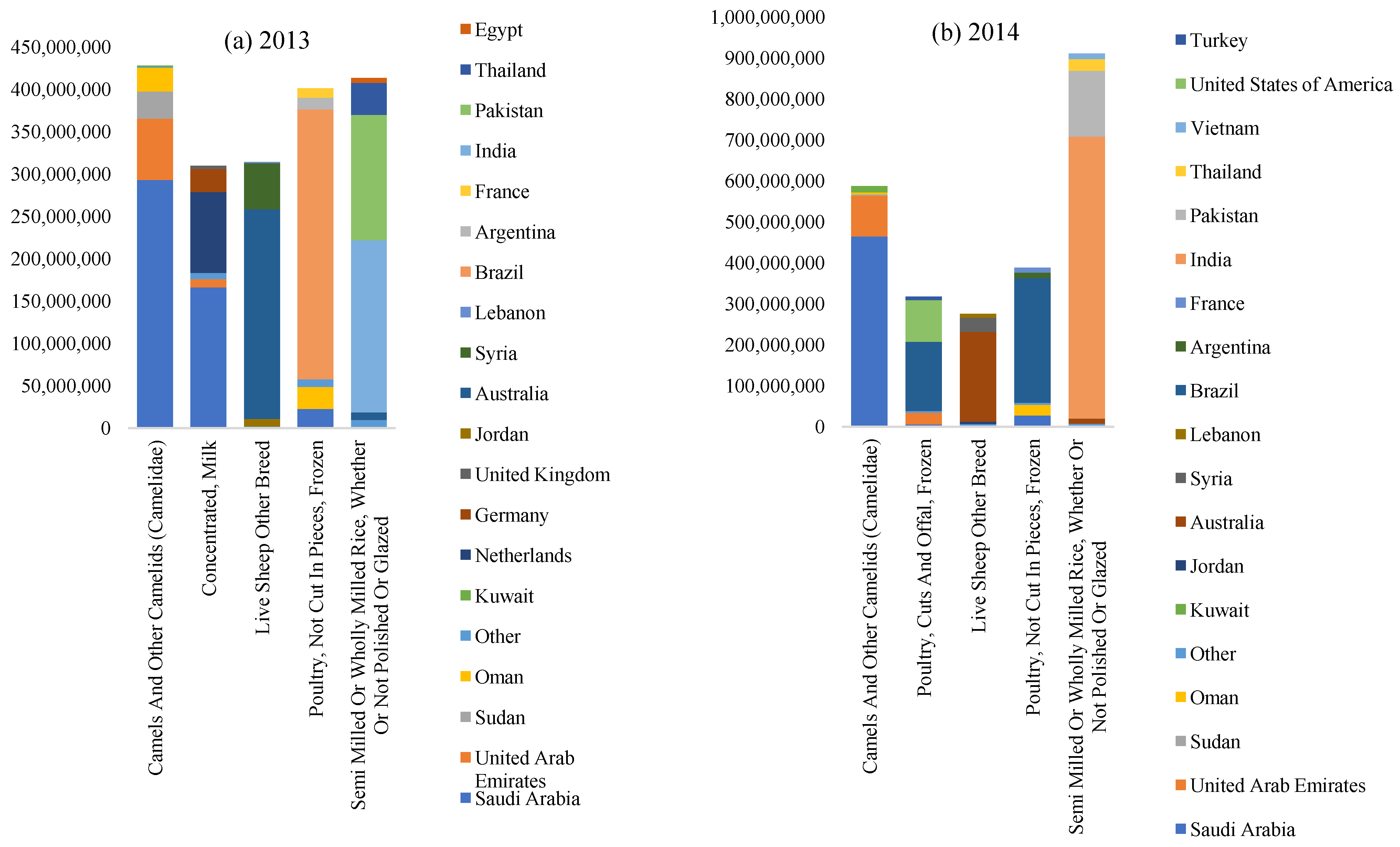
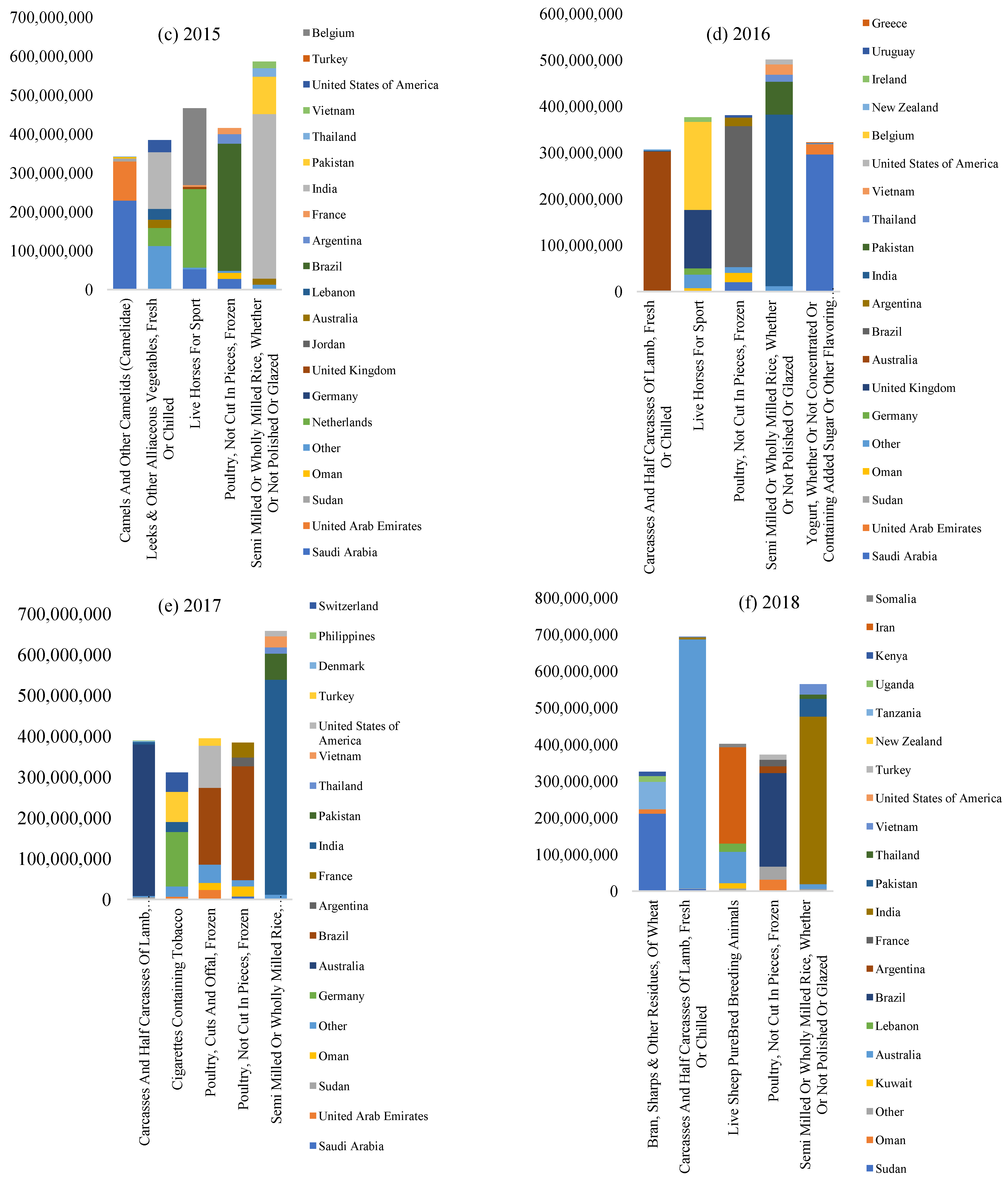
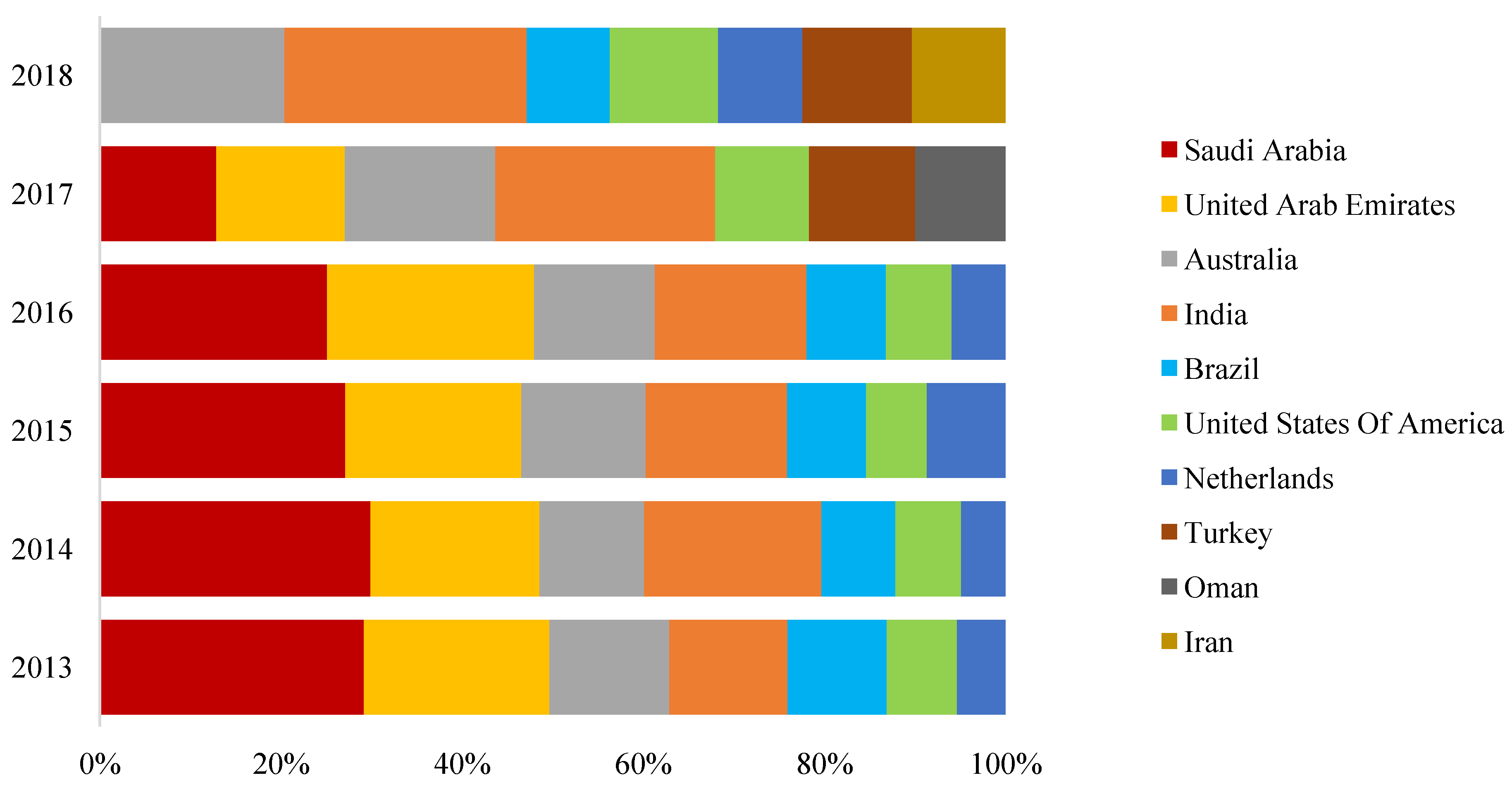

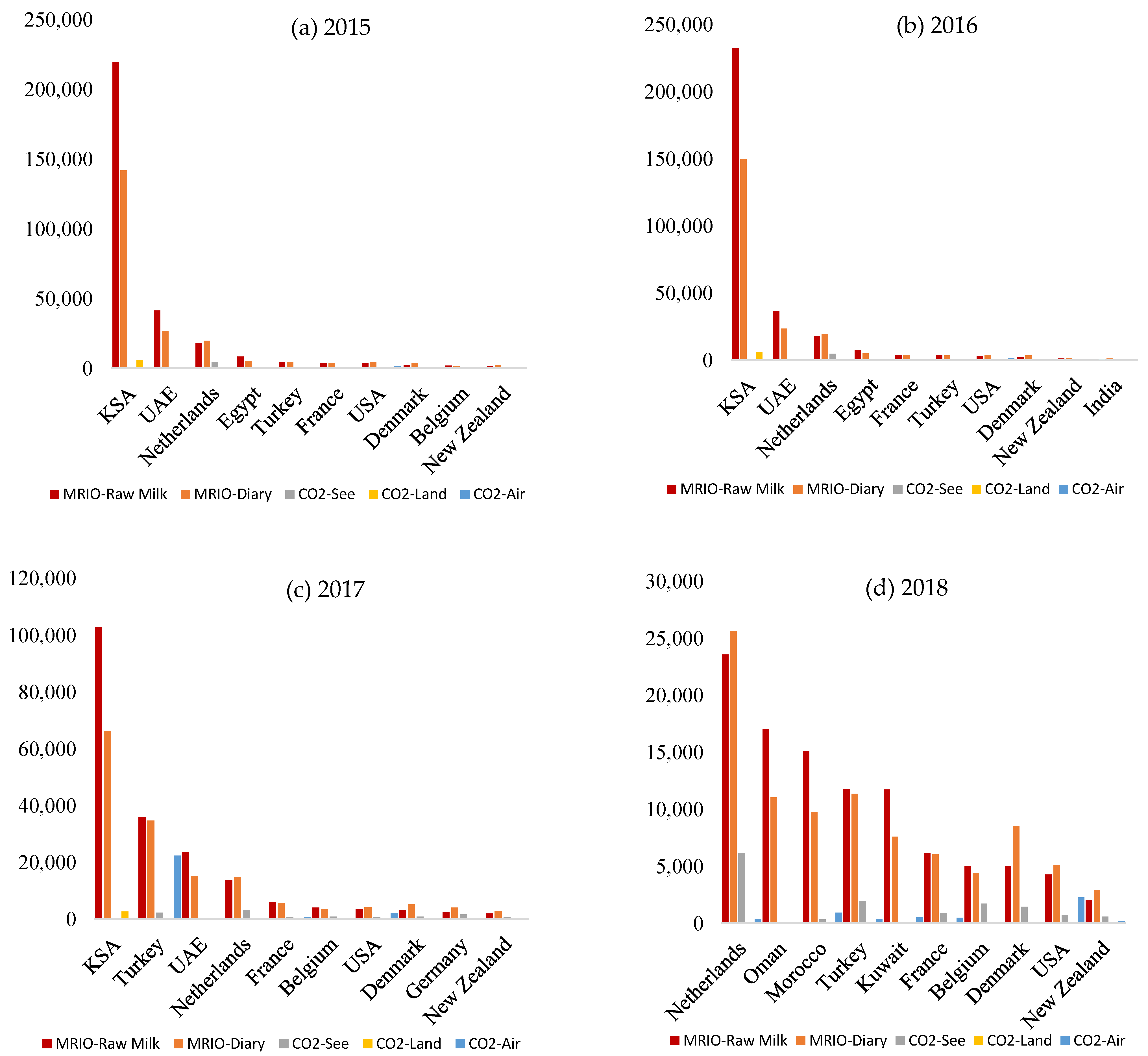
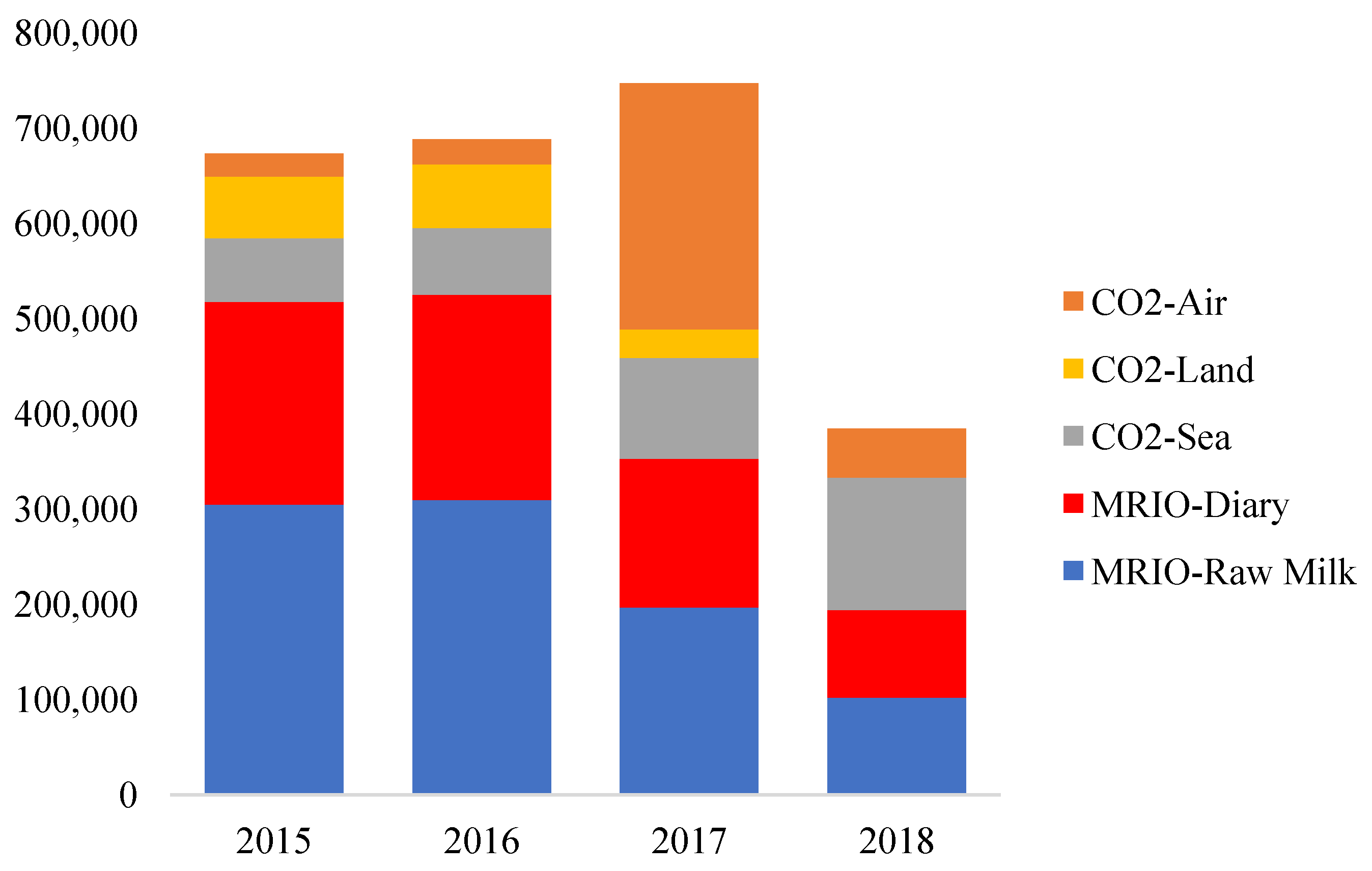
| Typical Term | Chemical Formula | Conversion Variables for the GWP over a 100-Year Horizon |
|---|---|---|
| Carbon dioxide | CO2 | 1 |
| Methane | CH4 | 25 |
| Nitrous oxide | N2O | 298 |
Disclaimer/Publisher’s Note: The statements, opinions and data contained in all publications are solely those of the individual author(s) and contributor(s) and not of MDPI and/or the editor(s). MDPI and/or the editor(s) disclaim responsibility for any injury to people or property resulting from any ideas, methods, instructions or products referred to in the content. |
© 2023 by the authors. Licensee MDPI, Basel, Switzerland. This article is an open access article distributed under the terms and conditions of the Creative Commons Attribution (CC BY) license (https://creativecommons.org/licenses/by/4.0/).
Share and Cite
Al-Abdelmalek, N.; Kucukvar, M.; Onat, N.C.; Fares, E.; Ayad, H.; Bulak, M.E.; Ekren, B.Y.; Kazancoglu, Y.; Ertogral, K. Transforming Challenges into Opportunities for Qatar’s Food Industry: Self-Sufficiency, Sustainability, and Global Food Trade Diversification. Sustainability 2023, 15, 5755. https://doi.org/10.3390/su15075755
Al-Abdelmalek N, Kucukvar M, Onat NC, Fares E, Ayad H, Bulak ME, Ekren BY, Kazancoglu Y, Ertogral K. Transforming Challenges into Opportunities for Qatar’s Food Industry: Self-Sufficiency, Sustainability, and Global Food Trade Diversification. Sustainability. 2023; 15(7):5755. https://doi.org/10.3390/su15075755
Chicago/Turabian StyleAl-Abdelmalek, Noora, Murat Kucukvar, Nuri C. Onat, Enas Fares, Hiba Ayad, Muhammet Enis Bulak, Banu Y. Ekren, Yiğit Kazancoglu, and Kadir Ertogral. 2023. "Transforming Challenges into Opportunities for Qatar’s Food Industry: Self-Sufficiency, Sustainability, and Global Food Trade Diversification" Sustainability 15, no. 7: 5755. https://doi.org/10.3390/su15075755
APA StyleAl-Abdelmalek, N., Kucukvar, M., Onat, N. C., Fares, E., Ayad, H., Bulak, M. E., Ekren, B. Y., Kazancoglu, Y., & Ertogral, K. (2023). Transforming Challenges into Opportunities for Qatar’s Food Industry: Self-Sufficiency, Sustainability, and Global Food Trade Diversification. Sustainability, 15(7), 5755. https://doi.org/10.3390/su15075755










